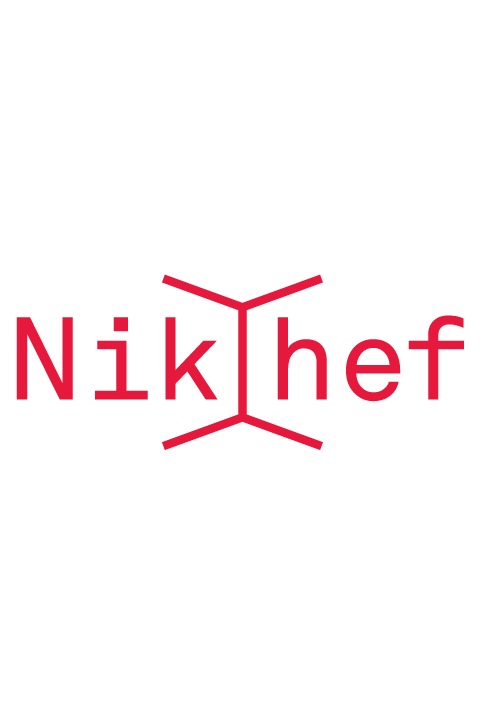XENON1T
Donkere materie
Nikhef is part of XENON, a collaboration of 21 universities and research institutes from around the world, aiming to unravel the mystery surrounding dark matter. Although most of the matter in our Universe can be categorized as dark matter, we know remarkably little about it. By means of an underground measurement setup XENON aims to change this.
Of all matter in our Universe, only about 5% consists of ‘ordinary matter’ as we commonly know it, built up from atoms. This is what all stars, planets and other visible materials are made up from. However, no less than 95% consists of dark energy (68%) and dark matter (27%).
Dark matter neither produces nor reflects light; therefore we can’t observe it directly. Nonetheless, we know it exists, given, for example, the motion of stars and galaxies, and other astronomical observations. We expect dark matter on Earth as well, all around us. For decades researchers have therefore been searching for fingerprints of dark matter.
What particles does dark matter consist of? One candidate is the WIMP (Weakly Interacting Massive Particle), a heavy particle that only has very weak interaction with other particles. Consequently, a WIMP hardly ever collides with these other particles. This could explain why collider experiments on Earth haven’t revealed any information about dark matter.
Together with their international colleagues, Nikhef researchers look for dark matter. To find ‘visible’ subatomic particles can already be very challenging, so how does one find ‘invisible’ particles? This is possible by looking at the interaction of dark matter with particles we do know. The likelihood of such an interaction is very small, however, because dark matter most likely doesn’t collide with other particles very often.
By bringing dark matter into contact with the noble gas xenon, researchers hope to increase the possibility of collisions. This is because xenon is a relatively large atom (atomic mass of about 130) and liquid xenon has a high density.
When dark matter collides with a xenon nucleus, a tiny amount of light is released, in the form of a flash. By registering such a flash, the presence of dark matter can be demonstrated indirectly. Because the chance of a collision between xenon and dark matter is so small, this, however, is not a simple measurement.
The latest experiment of the XENON collaboration, XENON1T, takes place in a cryostat vessel, a type of fridge, needed to reach the temperature of about -100°C at which xenon turns from a gas into a liquid. The vessel contains about 3,5 tonnes of liquid xenon as well as detectors to register the light flashes. All around it, a water tank is built to shield the experiment as much as possible from background radiation. The setup is constructed deep within a mountain, near the Gran Sasso National Laboratory in Italy. This location, with 1400 meter of mountain overhead, ensures that as few cosmic muons as possible distort the experiment.
The XENON detector is able to distinguish the WIMP from any background radiation that might still be there. The researchers hope to use the measurement data to determine what new subatomic particle dark matter consists of: what mass does it have and what is its likelihood of interacting with ‘ordinary’ matter?
Researchers and technicians at Nikhef have designed the cryostat vessel, as well as the support and levelling mechanisms of the vessel. They also developed the algorithms to determine which of the detected signals need to be retained, and written the software to process the electronic signals to allow further analysis.
XENON has been operational since 2016. Together with their international colleagues, the Nikhef researchers will remain involved in the analysis phase. The international XENON group is composed of about 100 researchers and technicians. Although XENON1T has only just started gathering data, the XENON collaboration is already planning the next step: XENONnT will be a detector featuring about twice as much xenon and a sensitivity of ten times that of XENON1T.
Fundamental research
This research programme is a prime example of fundamental scientific research, aimed at gathering basic knowledge about everything around us. At the heart of this type of research is curiosity about what our Universe is made of and how it came to be. There’s much that we know already, for example that all visible matter is built up from atoms, yet many questions remain unanswered.
Fundamental research is not aimed at realizing applications in the short term. Still, one thing is for sure: no one can predict which ground-breaking applications will eventually emerge from this research. History shows that today’s fundamental knowledge forms the breeding ground for tomorrow’s discoveries.
Speuren naar het gros van het heelal (XENON1T) (Dutch only, from the New Scientist NL Nikhef special)

